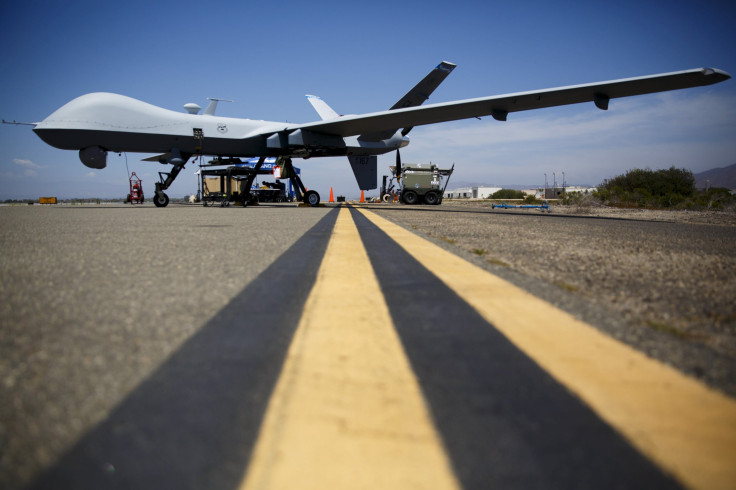Next-Gen Drone Flies By 'Breathing' Air And Can Stay Aloft Indefinitely

Drones have become the most sought-after armament in modern warfare. Advancing technology has created a slew of modern UAVs that are capable of carrying out a wide range of military objectives while simultaneously ensuring little to no damage to soldiers.
A new drone, named Phoenix, can reportedly stay aloft by "breathing" in air. The next-gen drone, created by several UK-based universities and small businesses, has been in development for the past three years and could revolutionize UAV-based military operations. The drone reportedly measures 49 feet long and 34 feet wide and doesn't require any fuel, which means that it could stay afloat indefinitely.
The drone appears significantly ominous, akin to a small flying bomb. With wings on either side covered in solar panels, the Phoenix drone uses a "variable bouyancy propulsion system" to stay afloat and move in the air. The drone is designed to absorb air and store it in an in-built inflatable bag. This makes the UAV heavy and allows it to use its wings to propel forward into an altitude-losing dive, Popular Mechanics reported.
Since the drone doesn't need fuel and doesn't contain an internal combustion motor, it can likely stay afloat indefinitely. This would make it an ideal tool for long-term surveillance and reconnaissance missions for the armed forces. Phoenix's fuselage is reportedly made of a material called Vectran, while its wings are made of carbon fiber. The materials used to construct the drone are inexpensive and its creators believe that it is "near disposable".
The drone's ability to remain airborne for indefinite period of time, the lack of fuel required and its almost disposable trait suggest that it could be an ideal tool for a wide range of military missions ranging from surveillance to providing means for secure communications. What is more, the Phoenix could also be used for long-term intelligence gathering missions, floating over a targeted area and capturing data via cameras and sensors to keep a track of a target's movements and communications.
Drone technology is advancing at rapid speeds, primarily because of the multiple military uses that drones can provide. Drones are now being equipped with nuclear abilities. While some drones are airborne, others can travel underwater. According to the Bureau of Investigative Journalism, the US military has conducted over 6,700 drone strikes since 9/11. Drones like the Phoenix indicate that modern warfare may soon undergo drastic changes.
© Copyright IBTimes 2025. All rights reserved.



















